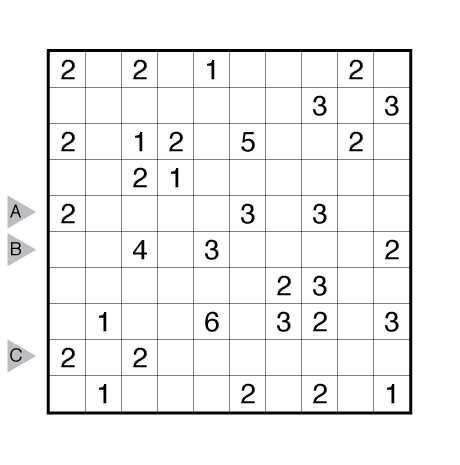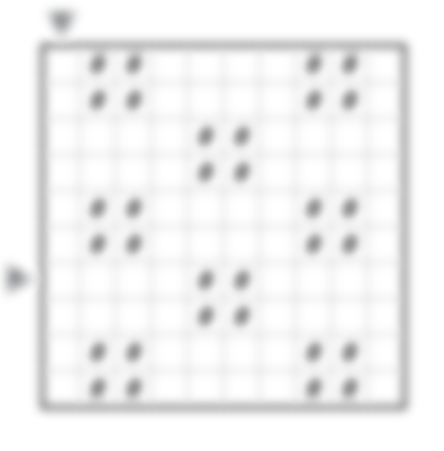Slithersweeper by John Bulten [Bonus]
Our subscribers receive access to bonus puzzles each week. We make these posts so those supporters have a space to comment on these puzzles, mark as FAVES, or log their solving. If you are interested in subscribing, click here for more info.

Theme: Clue Symmetry and Logic
Author/Opus: This is the 31st puzzle from our contributing puzzlemaster John Bulten.
Rules: Combination of Double Minesweeper and Slitherlink.
Place either 0, 1, or 2 mines into each empty cell so that each number represents the total count of mines in all neighboring cells, including diagonally adjacent cells. See also this example:

After solving the Minesweeper, convert these cells’ contents to numbers (use corresponding cells in additional grid), then draw a single, non-intersecting loop in the additional grid that only consists of horizontal and vertical segments between the dots, where the number inside each of these cells indicates how many of the four edges of that cell are part of the loop.
Answer String: Enter the length in cells of each of the internal loop segments from left to right for the marked rows, starting at the top. Separate each row’s entry with a comma.
Time Standards (highlight to view): Grandmaster = 4:15, Master = 7:30, Expert = 15:00
Note: Click here for other Double Minesweeper puzzles and here for other Slitherlink puzzles.










